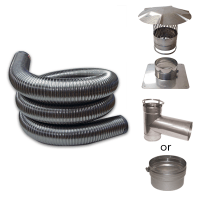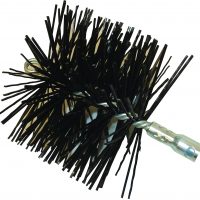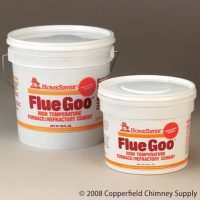Homeowners faced with rising home heating costs have many options that won’t mean drastic lifestyle changes.
Faced with rising home heating costs and threats of worse to come, many homeowners are turning to alternative fuels, such as wood and pellet stoves, as alternative heating sources. Despite being in the fireplace business, we urge caution before making the leap to alternative fuels.
Historic homes need extra special care. Generally the chimney is unlined, and may be suffering other problems due to age, deterioration and inadequate care over the years. The hearths, fireplace openings and chimneys are smaller.
WOOD STOVES
We got our start in the fireplace industry in 1979 when the only alternative energy product we sold was wood stoves, and the only color choice was black. Sure, they offered a less expensive alternative to oil heat but these air-choking monsters caused a lot of pollution, dirty chimneys and home fires due to improper installation. In the intervening decades the fireplace industry has made great strides in creating wood stoves that are highly efficient, heating more space with less wood, creating less smoke in the air, helping keep chimneys cleaner. Wood stoves now offer a great many design styles and color options to suit any decor, but is wood the right fuel choice for you?
Smaller fireplace openings mean you’ll have a difficult time finding a woodburning insert that will fit. For the smallest fireplace openings, you won’t find one at all. Smaller openings mean the mantel is smaller, so you’ll never meet required clearances from a wood stove to a combustible mantel. In historic homes the hearth was usually laid on top of a combustible floor, meaning it does not offer adequate protection, per codes, when installing a wood stove. You’ll never get an insert into most original fireplaces based simply on their smaller sizes, but even if you have the odd, large fireplace opening then the hearth, the mantel and the condition of the chimney will be a big concern. Installing a chimney liner will nearly always be required per code and/or per manufacturer’s installation instructions.
SPECIAL CONSIDERATIONS
So if you meet all of the clearance requirements – usually with numerous and expensive alterations – does woodburning suit your home and your family’s lifestyle? Most Victorian era homes we deal with are row-style city homes with small yards and, often, a lot of steps to get that firewood up and into the house. Will you be able to store an adequate wood supply, and will it be practical to tote it into the house?
Also, you must consider your payback period. Cost of stove, alterations to the house, installation costs, then figure how much wood you think you’ll burn to heat your house. How much will woodburning save you versus other fuel costs?
We find that based on virtually no selection of stoves/inserts that will fit tiny fireplaces, the costs of alterations to accommodate a wood stove plus other installation and operation factors, wood stoves simply don’t offer a good solution for our particular group of customers.
PELLET STOVES
Once upton a time we sold a lot of pellet stoves, before we narrowed our product selection to Victorian era / Victorian style fireplaces and accessories. Pellet stoves are a great alternative heating choice in some circumstances, but rarely will you be able to connect one to an existing, historic fireplace due to size requirements.
I have my own complaints with pellet stoves, and since I didn’t personally enjoy burning one, I can’t personally recommend them. My biggest complaint, at my age and stage of life, is fuel storage and transportation.
Quality pellets are not readily and dependably available in all areas. Transportation and storage of the fuel will be a problem for many folks. Generally sold in 40 lb. bags, they’re just a bit heavy for me to tote at this point. Additionally, the fuel must be stored in a way that it’s protected from the weather and I just don’t want a ton or 2 of pellet fuel stored in MY garage.
From a operational standpoint, the numerous models of pellet stoves I’ve used in the past can be very finicky to operate. Keeping the appliance clean and well maintained is essential to how effectively it operates. Burning a pellet stove requires less daily care than a wood stove, but it is less forgiving if you get a bit lazy in the way you maintain or operate it. Plus, pellet stoves have multiple electrical components on them (auger motors, convection fans, combustion/exhaust fans and a lot of switches and controls) that require electricity to operate. Without a backup electric supply, most pellet stoves won’t operate during a power outage… the time you may most need a secondary heating system.
On the plus side, pellet stoves do use a renewable energy source from reclaimed biomass (usually sawdust). They have flexible installation options, particularly for freestanding models. If you have a reliable local supply of good quality pellets, the means of storing an adequate supply and commit to regular maintenance, this is an appliance you might consider. However, we don’t sell them any more because they don’t suit our particular group of customers’ needs which are generally those folks with a Victorian decor and/or very small, historic style fireplaces.
DECORATIVE OPEN FIREPLACES (Wood or Gas)
If you’re burning a traditional, open fireplace then you really may as well be burning dollar bills for heat! If you must open a damper to burn wood OR gas logs in your fireplace then you’re sendng all of that heat – and then some – right up the chimney. The draft of the chimney usually removes more heat from your house than the fire actually adds to your house.
And keep in mind, you’re likely sending heat up the chimney that you already paid to get. Here’s why: if gas logs or wood logs are adding, say, 5000 btu’s of heat to the room per hour, they chimney is pulling, on average, 5500 btu’s from your home. And that’s 500 btu’s of EXTRA heated air produced by your furnace or central heating system.
If your gas logs are consuming 60,000 btu’s of gas per hour to fuel them, and your furnace is also using 60,000 btu’s of gas per hour to heat your house, you’re doubling your fuel consumption and sending about 600 btu’s per hour up your chimney.
But burning wood saves money, right? Probably not. In an urban area where you’re probably paying for wood, firewood may cost more per btu than natural gas. The problem is the same: that fireplace damper is open and you’re just losing more heat than the fuel in the fireplace can produce. From an economical standpoint, your payback on a high-efficiency wood or gas burning fireplace insert may pay back your costs in a year or two, and this is an appliance that ADDS heat to your house because the proper installation method blocks off your chimney to help reduce heat loss. Gas or wood burning inserts are also a great alternative heating source during power outages, or for supplemental heat to reduce overall heating costs: turn down the thermostat and keep the areas you spend time in warmer while bedrooms or unused rooms are kept a bit cooler.
HOW ABOUT ELECTRIC FIRES?
Knowing that an open burning, traditional fireplace costs money and removes heated air from your house, one answer is to close off the fireplace. We find a great way to do that is an electric fireplace insert. You have the advantage of a fireplace effect with moving flame, and electric fires generally add 4500 to 5000 btu’s to the room.
Electric fireplaces are 100% useless if the power goes out, but they do slide right into the fireplace so if you find you need or want to burn wood, just slide the insert out of the fireplace, open the damper, load in some wood and light a fire. For everyday use, these are great when you just want the warm glow of a fireplace: turn on the flame effect only (this costs the same as running a light bulb or 2) or, for added heat, turn on the electric heater option. Electricity is a competitively priced energy source in most areas; electric fireplaces are 100% efficient and they do offer a creative way of sealing off your fireplace and adding a lot of ambience and warmth to your room.
If you want to heat with an alternative fuel, just keep the facts in mind. Consider your payback period on the investment to install the new appliance. And if you simply like the look and ambience of an open burning fireplace and hate the idea of a glass window between you and your fire, then that’s ok – just be aware of the overall impact on your heating bill. It’s like going out to dinner; it will probably cost more than cooking at home, but it’s an enjoyable experience that you may be willing to pay extra for.
*Article by Karen Duke, Victorian Fireplace Shop
Karen Duke is a fireplace, chimney and hearth industry expert of over 25 years in both the retail and service sectors. She is a CSIA Certified Chimney Sweep and has numerous hearth industry certifications. She is the founder and webmaster of www.TheFireplaceChannel.com and she is the co-founder and webmaster of www.TheVictorianFireplace.com , which is one of the largest online fireplace retailers in the world. She makes her home in Mechanicsville, Virginia. Karen’s contact information can be found on either of the above sites.






